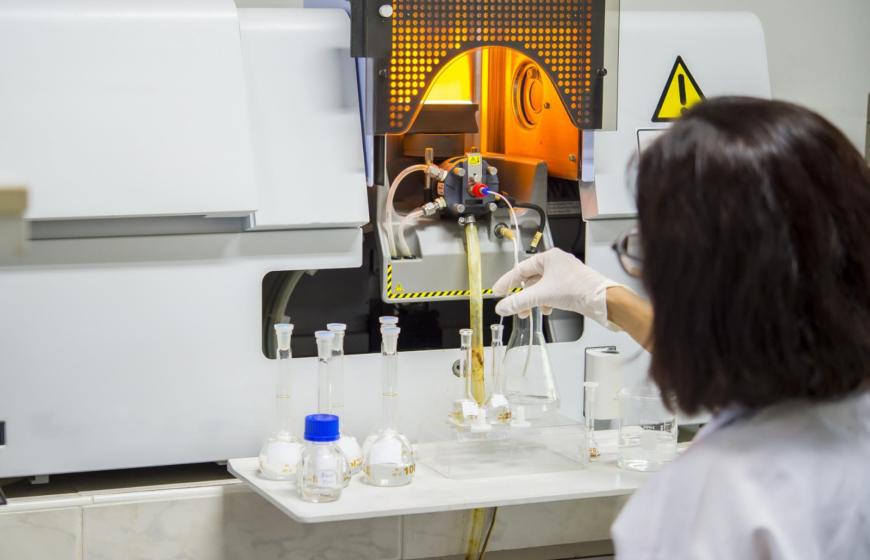Spectron FM53 two stage cylinder regulator
Download
This analytical technique, referred to as AAS, uses an extremely high temperature flame from combustion of acetylene and nitrous oxide. Samples are passed into the flame for analysis.

Flame atomic absorption spectroscopy (AAS) is applied in many contract laboratories engaged in food and environmental work. The main application is the detection of metals which may be present in the ground water, drinking water, food or soil sample at trace quantities. One such example is the determination of mercury levels in tuna fish. Tuna is a higher order predator and mercury from the entire lower food chain accumulates in the fatty tissues in the fish. Clearly high levels of mercury in tuna would render it unsafe for human consumption and it is common to analyse tuna fish samples regularly to prevent mercury entering the human food chain.
The detection principle in flame AAS is the absorption of light by the metal ions. A cathode lamp light source emits light, some of which is absorbed by the metal ions. The resultant light is received by a detector and the missing wavelengths are interpreted to represent the presence of metals in the sample. Flame temperatures in this technique are generally either 2300°C when burning instrument grade acetylene fuel gas in air to 2700°C which can be achieved by burning instrument grade acetylene in the instrument grade nitrous oxide.
It is essential to use specialty gases instrument grade products for this application, not industrial grade acetylene or medical nitrous oxide. The instrument grade acetylene has been produced in a way to eliminate any traces of metallic elements that might interfere with the highly sensitive analytical results. The medical grade nitrous oxide cylinder is fitted with a pin index valve for use in hospitals and will not fit a normal laboratory specialty gases regulator connection. Pin index valves are uniquely used in medical gases applications to avoid cross-contamination with industrial applications and to ensure that the correct gas is connected to the correct gas delivery system in the hospital.
Another leading technique for similar types of analysis is the ICP-MS instrument. It is notable that the use of flame AAS in Australia is more predominant than other parts of the world and this might be due to the fact that development of modern AAS instrumentation was developed during the 1950s by a team of Australian chemists led by Sir Alan Walsh at the CSIRO Division of Chemical Physics in Melbourne. Similar to flame AAS, ICP-MS has earned its place in environmental and food testing laboratories to detect metals in water, soil and food samples. ICP-MS has been adopted more heavily, for example in parts of Europe, than flame AAS.